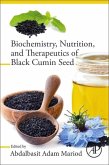Polyethylene terephthalate PET (Dacron®) textile and expanded polytetrafluoroethylene ePTFE (Teflon®) are the gold standard cardiovascular grafts hold several preferable advantages. However, implantation of PET or ePTFE graft is associated with bacterial infections and triggers a chronic host response that essentially decrease the grafts patency and necessities its replacement. These complications are standing as a tough challenge for many researchers. In this work, expanded polytetrafluoroethylene ePTFE graft and two different crimped configurations of PET cardiovascular grafts, woven and knitted, were modified to minimize the bacterial adhesion and to enhance the biocompatibility. Employing various ideas and strategies along with different standard methods supported with in-vitro studies and statistical data analysis, we present effective approaches to treat the most common complications after graft implantation to potential improvement of the grafts patency and patient`s life quality.
Bitte wählen Sie Ihr Anliegen aus.
Rechnungen
Retourenschein anfordern
Bestellstatus
Storno








